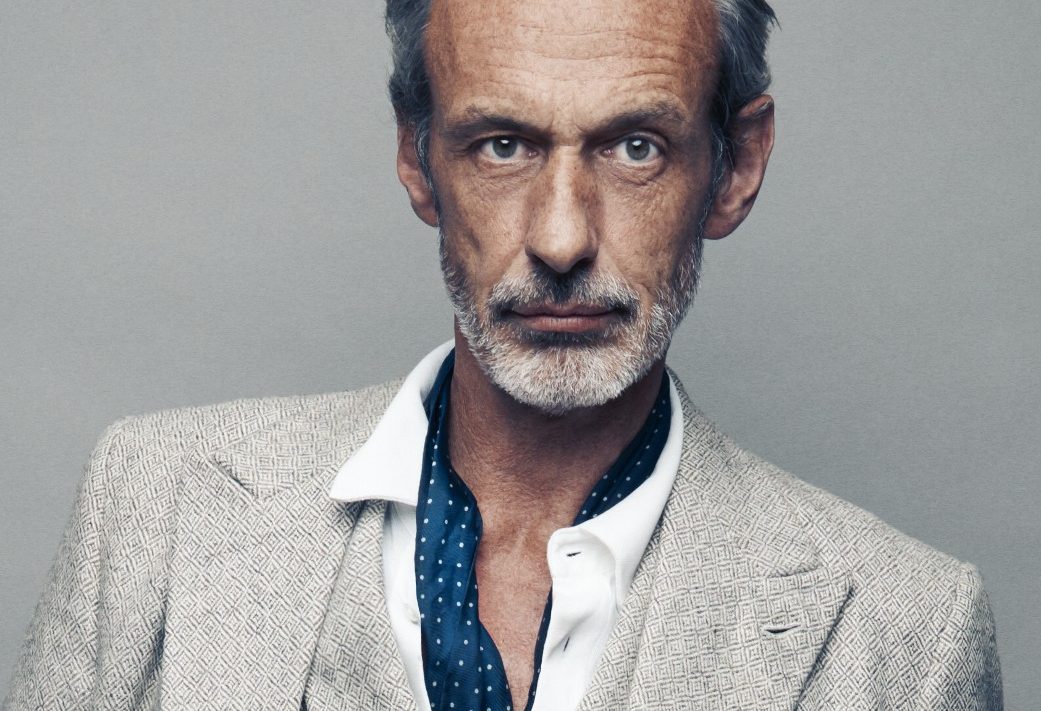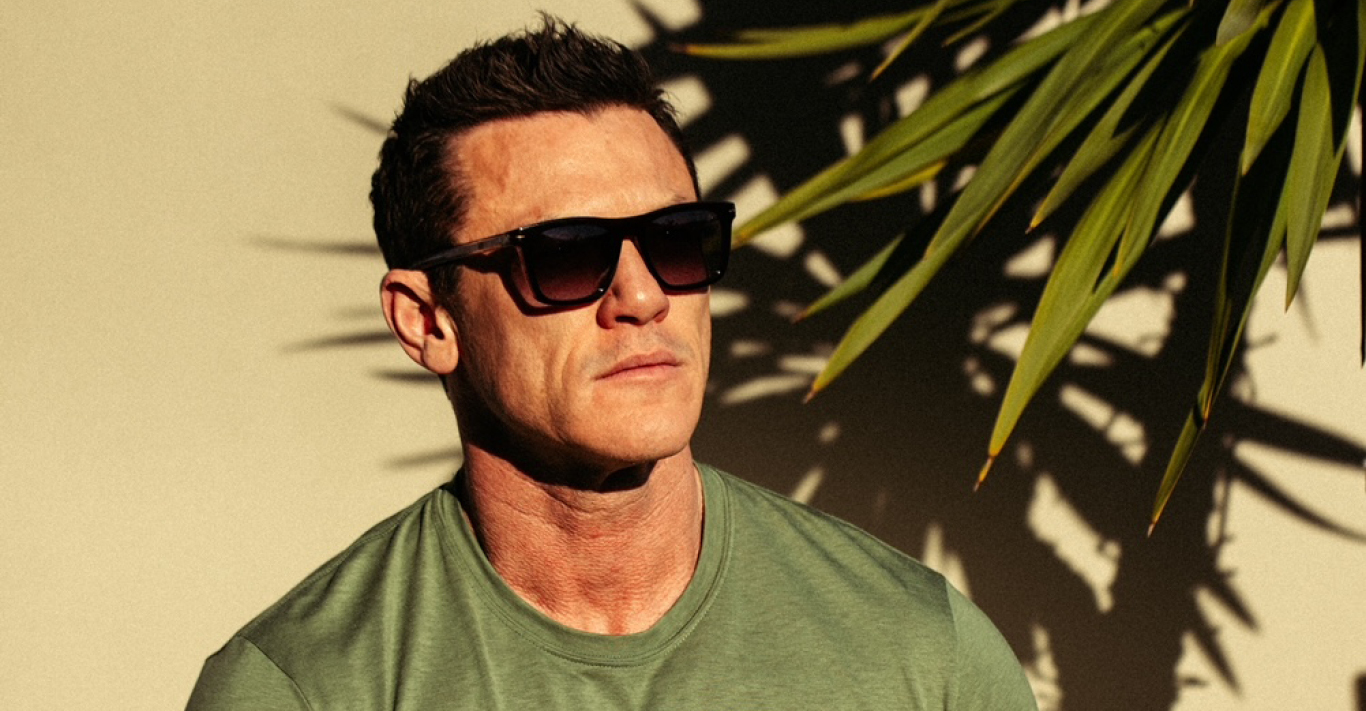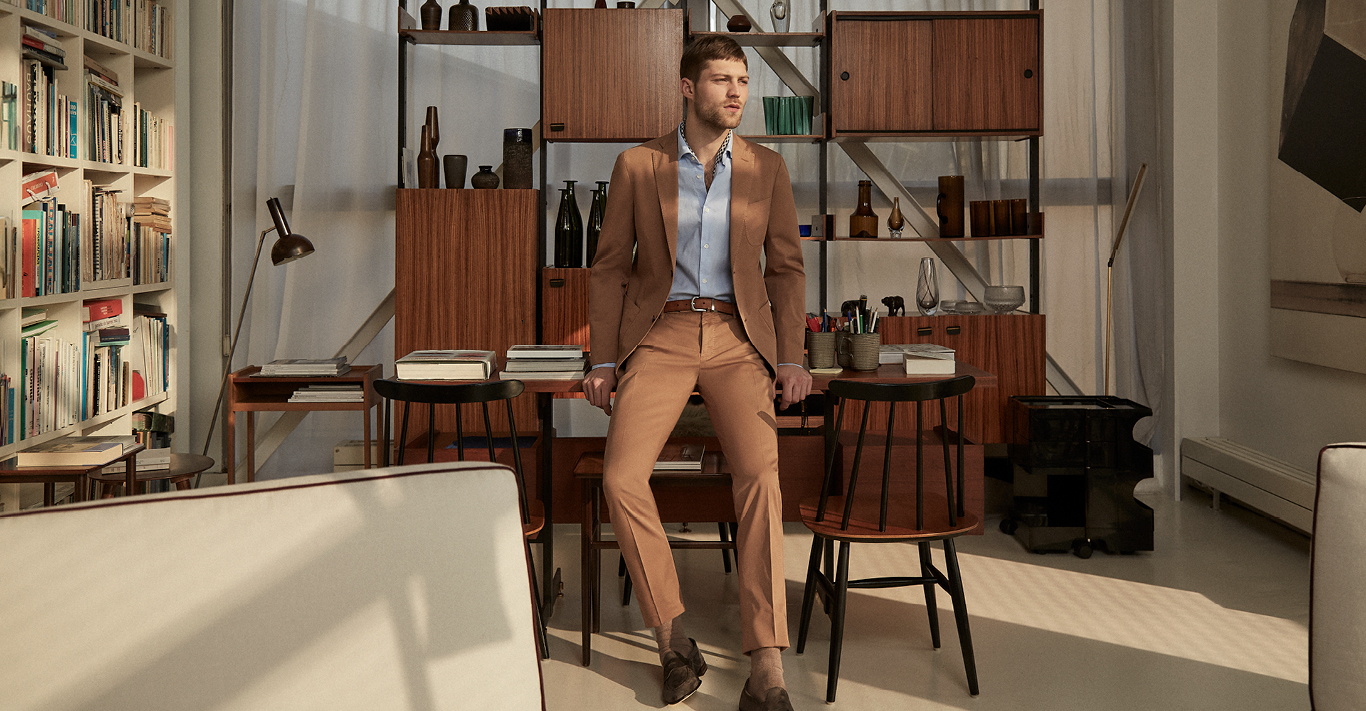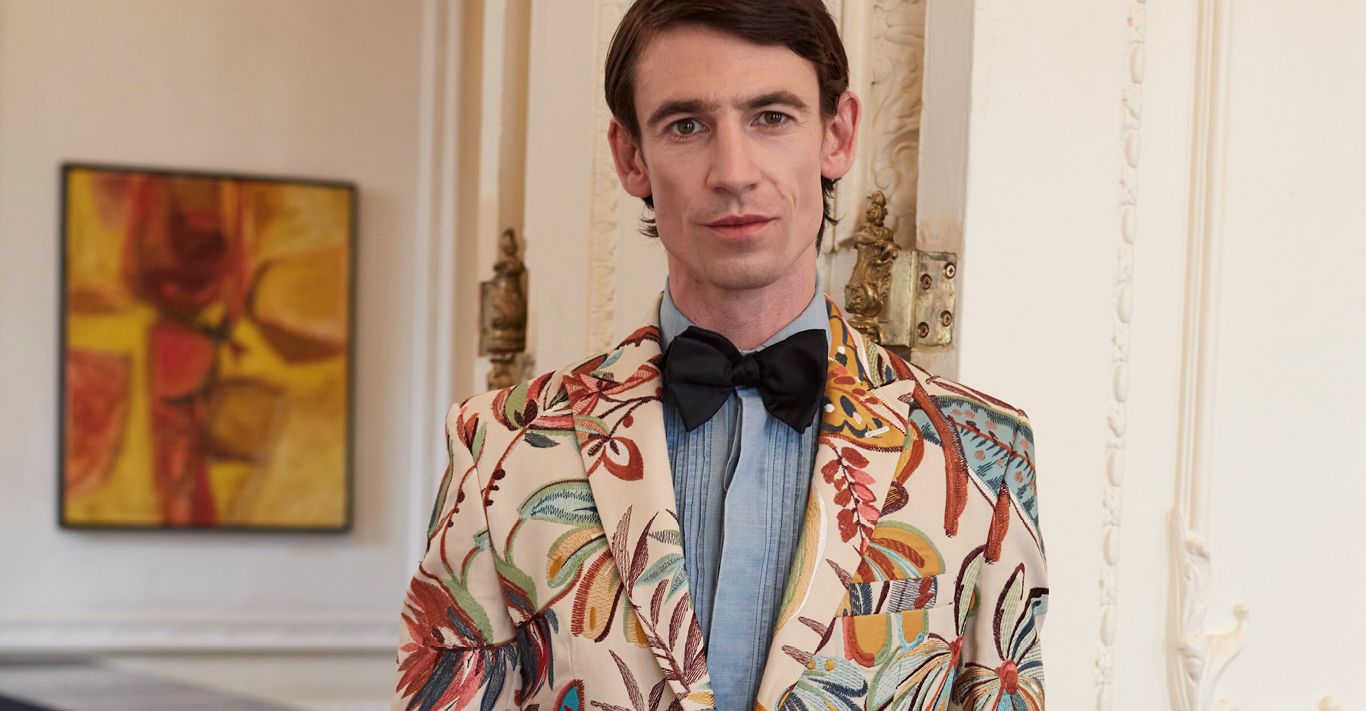WORDS
Peter Howarth
William Gilchrist has worked in the fashion industry for his entire professional life, making an early transition from designing to styling. A passionate sailor, he is never happier than when near or on the water, and has recently returned to the UK after living in Naples. Brummell caught up with him to talk styling, dressing and T-shirts.
When did you first realise that you were interested in fashion?
Well, I guess it was when I was young and witnessed older people doing the kind of New Wave/punky thing. I started to see people wearing certain things in a certain way where I could see it was a point of difference. So that gave me a sense that your wardrobe could have a different meaning. It could be used as a form of statement.
And now you are a stylist. How would you describe the work of a stylist?
Well, it depends on the context. If it’s working with a brand, like I recently did with Sunspel for a shoot (which was about how to style a white T-shirt), you quite often have the chance to come in from the outside, providing a fresh point of view for the designer. And so, you’ll be able to see what they’ve been working on – look at the fabrics, yarns, colours they’ve used, look at the pieces they’ve created – and work with them to put things together in a cohesive and maybe stronger way. Sometimes you’ll see ways to combine things that they can’t because they’re totally immersed in the work. It’s a way of offering a fresh viewpoint, a constructive one.
But you don’t just work with brands – there’s also magazines. You’ve been a fashion editor. What’s that like?
I was very lucky to start in a golden period for magazines, where you do shoots for readers: it’s about creating your own jigsaw puzzle. You can throw all these pieces up in the air to come up with your own take on how they fit together. Your job is to put them together in new and interesting ways to give readers ideas of how they can wear things. The pieces don’t have to tesselate in an obvious way – you’re coming up with your own structure. And part of the fun of editorial work is that you build it with a team – with the photographer, with the model, with the hair, with the make-up. The world of publishing is going through an immense upheaval at the moment and many magazines have lost direction as they lose their individuality. Business has disempowered editorial but there will always be phoenixes that rise from the ashes. Creativity, like a voracious plant, will always find a way to grow.
And the aim when working editorially is to show people great clothes put together in a good way?
Yes. And I think particularly when it comes to menswear there’s a subtlety to that. What specific pieces you choose. I’ve always said a centimetre is a very long way in menswear. And that’s one of the fun things about styling for men.
You also dress famous people.
If you’re personally styling celebrities, then it’s a different thing because you’re dealing with somebody who’s got a public personality. The question you ask – and this might be the brief – is whether you are trying to change how they look or trying to enhance the look they are known for.
And there’s context. It might be that you’re doing a shoot for international press for a movie and the film company is trying to do a photoshoot that works well throughout the whole world. Those jobs often just get compromised to the point of ‘Let’s just make them look quite nice – let’s not say anything [with the outfit] because the only statement we really want to make is about promoting the movie’. But then, quite often, you’re working with interesting people who are up for trying things out. With actors you can sometimes create a narrative for the photoshoot so they get to play a little bit of a role, which can be helpful. You want them to look good, but you’re allowing them not to be fully exposed as who they are. I think actors quite often find the lens, the photographic lens, quite harsh, quite scary. They’re used to being in character, and they can be incredibly strong and bold in that character. But with the lens they’ve got nothing to hide behind. So, you give them a wardrobe to hide behind. It helps.
How did you get into styling?
I studied fashion design at London College of Fashion. And at that time, the ’90s, London had a strong fashion scene and there was real energy in the city. Fashion was in the nightclubs; in the music; in the magazines. I tried my hand at designing: I made some jackets for a shop called Bizarre in South Molton Street. I remember that while they were selling them for, let’s say, £100 each, they were probably costing me £150 to make, so I wasn’t quite down on the economics. Then I went to Italy because I got a job in a design studio.
Why Italy?
In London my generation of fashion graduates was coming up after the people who preceded us, like [John] Galliano and BodyMap, and I realised that a lot of designers were just trying to follow in these people’s footsteps. And I’ve never really been interested in that. When the opportunity came for me to start over in a whole new country, I took it. I moved to Milan. I didn’t speak a word of Italian, so the first six months were not good because I was reduced to behaving like a child. But I learned the language. I also learned that designing was not for me. Then an acquaintance told me they knew of someone looking for an assistant stylist. I didn’t really know what that was. I was told that every week is a different job; every week is a different concept; every week is a different place. That suited me just fine. Before I knew it, I was working in St Barts for two weeks – it seemed the only requirement for the job was a passport, an open mind and a love of travel.
Now you’ve been styling for a while, for magazines, brands and people. Who are the most famous people you’ve worked with?
That would be The [Rolling] Stones. I was lucky enough to work with them for a good length of time – from 2005 up until about five years ago.
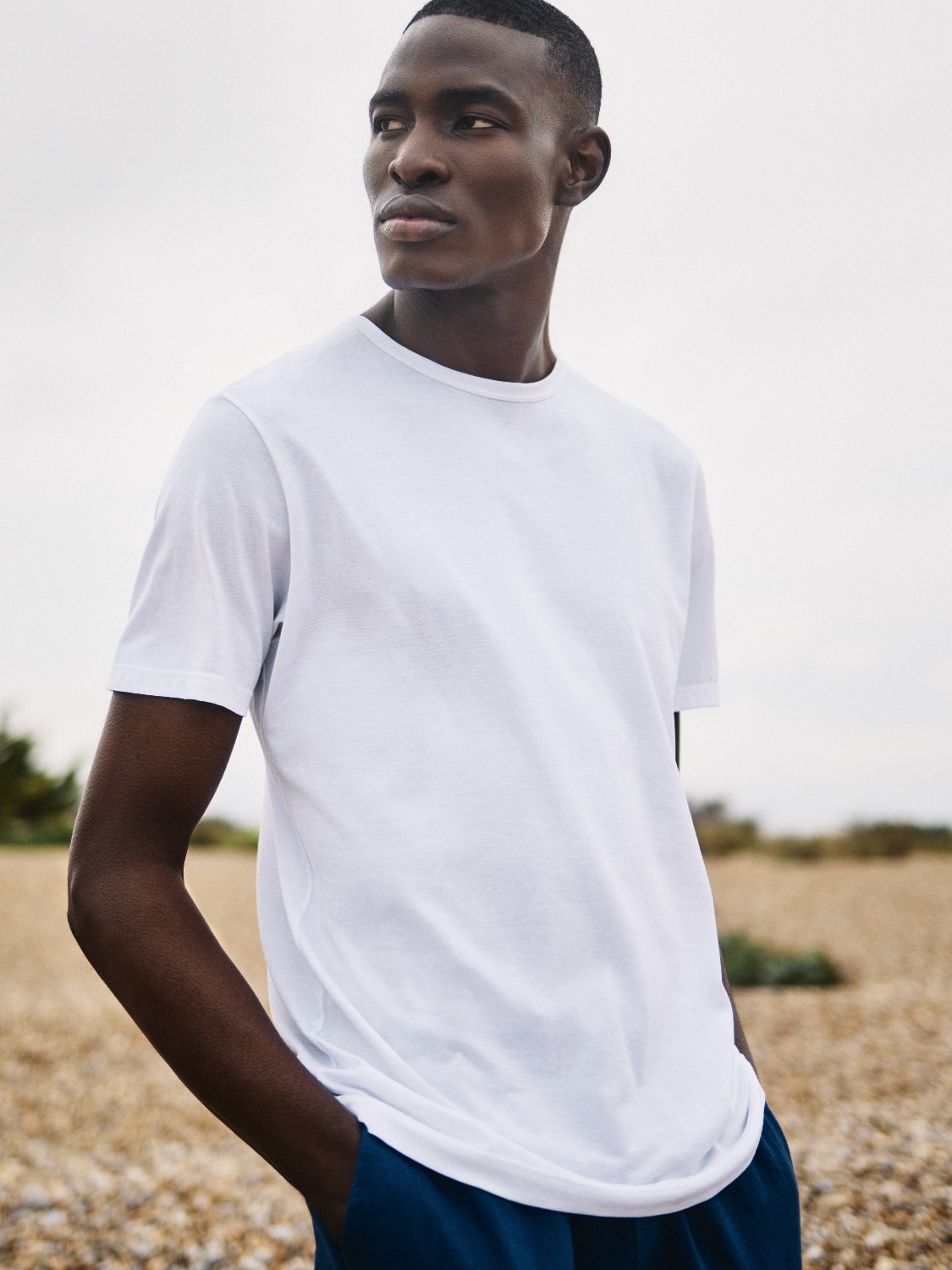
What were they like to dress?
I was one of the stylists, but by no means the only one. It was a unique experience and each musician a unique individual. With regards to wardrobe, their personal tastes and requirements dictated what I provided. I hadn’t done stage wardrobe before, and Mick was really helpful in explaining the needs of the individuals on stage – like how the use of colour ensured that audience members in the far seats could discern the individual musicians. A good example of something that from the outside is invisible but is actually very considered was how I worked with the very lovely and elegant Charlie Watts. He tended to choose a “basic” T-shirt for stage, however, thanks to the help of Sunspel, this basic was made bespoke, like most of his wardrobe, to meet his needs. Being the drummer, he was sitting most of the time, so I had the hem angled shorter in the front to stop it bunching up and longer in the back to provide appropriate cover. The sleeves were slightly lengthened and narrowed to ensure they also didn’t bunch up. For a gentleman with such a keen aesthetic, I wanted his tees to respect that.
Do you wear T-shirts?
I do. They are a great classic basic for any wardrobe. Especially the white T-shirt, which has been a menswear staple since it stopped being an undergarment after WWII and became something worn by everyone, from rebels and bikers to sporty jocks. I like to wear the Marmite of tees: the V-neck.
What’s your view on style and comfort? Are they equally important?
Well, you might be going to an event and getting a little bit more trussed up, but generally, I think style and comfort should go hand-in-hand. Speaking personally, I have a real problem with the idea of the peacock parade that menswear can descend into. I was once asked what I thought of the way men can dress in super-sartorial dandy style, and I sent them a medieval recipe for peacock because I’m so bored of it. I’m all for personal style, but that kind of dressing-up is not style. It’s affected and speaks of insecurity.
But is context important? So black tie for the red carpet, a windcheater for sailing? You’re a sailor, right?
Of course context is important. The peacocks dress up as if they are going to the equivalent of a wedding or red-carpet event all the time. That’s the issue. And I’m all for dressing appropriately. Funnily enough, at the beginning of lockdown I was stuck in California in the desert by a lake, and I thought the only way I’m going to get through this is by sailing, which I’ve been doing all my life. So, I bought a child’s sailing boat, stuffed it in the back of a car in San Diego, drove it over the mountains and then went on the water, so I was able to survive this whole conundrum.
And what did you wear?
When I’m on a boat, in an ideal world, it’s a pair of trunks and a white V-neck Sunspel T-shirt, and then I’ll have a storm-proof or windproof something to put over the top. Also, a deck shoe of some description, as feet can get the brunt of a bad decision. Ideal scenario? The three Ts: trunks, tee and tequila.
Do you have any general tips for dressing well?
As we said, context is important. I think this whole thing about what they call lifestyle or casual dressing is worth a look. If you’re going to the gym, that’s great. But please don’t wear your workout clothes to lunch with me. I don’t care what they’re made of – maybe they’re in cashmere, or vicuna for all I know? But it doesn’t matter. Think about where you’re going! Of course you should feel comfortable, but just make an effort. I really do think that some people have misunderstood the concept of being comfortable, and they’ve taken it to mean be lazy. I’m all for comfort, but I like to wear a suit if I go to the ballet. Though it can be a relaxed, unstructured comfortable suit, of course.
So, is that the key? We can still dress up, but we don’t have to do it in a formal way – the new tailoring is better suited to a more relaxed attitude?
Exactly. I always say of clothing, wear the armour. But the armour doesn’t have to be made of steel. There’s some great stuff going on out there in fabric development and tailoring design. From performance sportswear fabrics that can be used for daywear, to unstructured jackets and trousers. Sunspel is developing suits, for example, where soft jackets are teamed with drawstring trousers. It’s still a suit, but not like your father wore.
Do you have a go-to outfit?
An unstructured cashmere double-breasted jacket I designed. Before I had it made, I washed the fabric in a washing machine, so now if I need to clean it, I just chuck it in the washing machine again. It’s in dark blue because that works with anything for me. And the washing machine thing is great because dry cleaners are murderers. And I also want the jacket to be malleable; so, I guess I’ve been wearing sportswear for a long time. It’s just I have a different name for a different sport! Then it’s just a navy V-neck Sunspel T-shirt, navy slim chinos and black leather boots.
For more information about William Gilchrist, visit williamjgilchrist.com; for more information about Sunspel, visit sunspel.com


